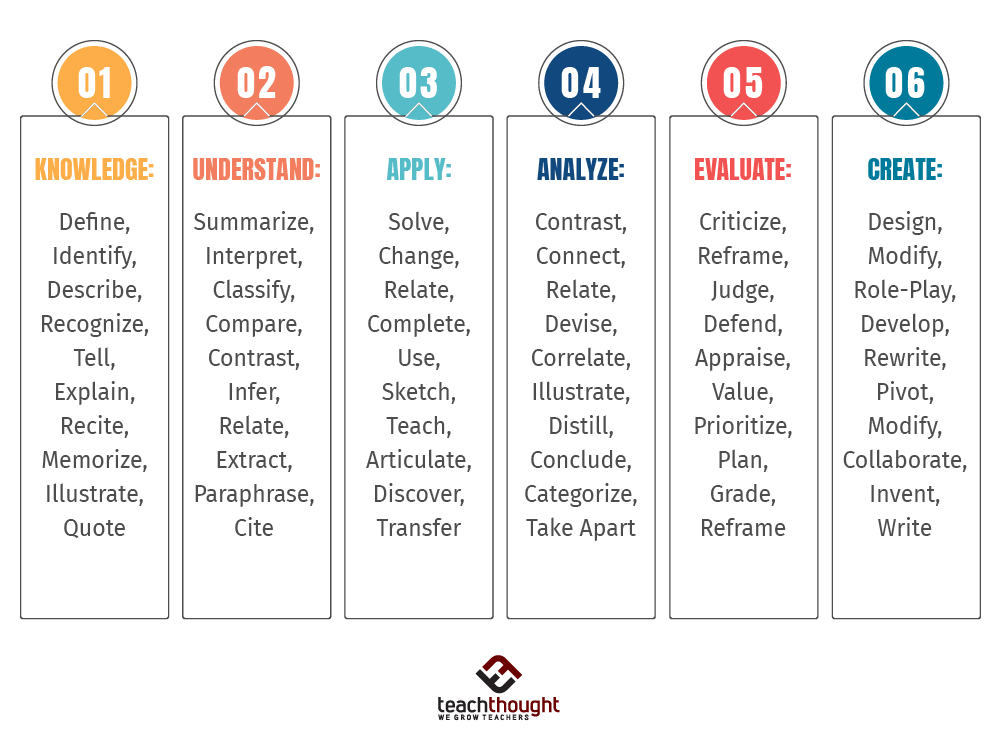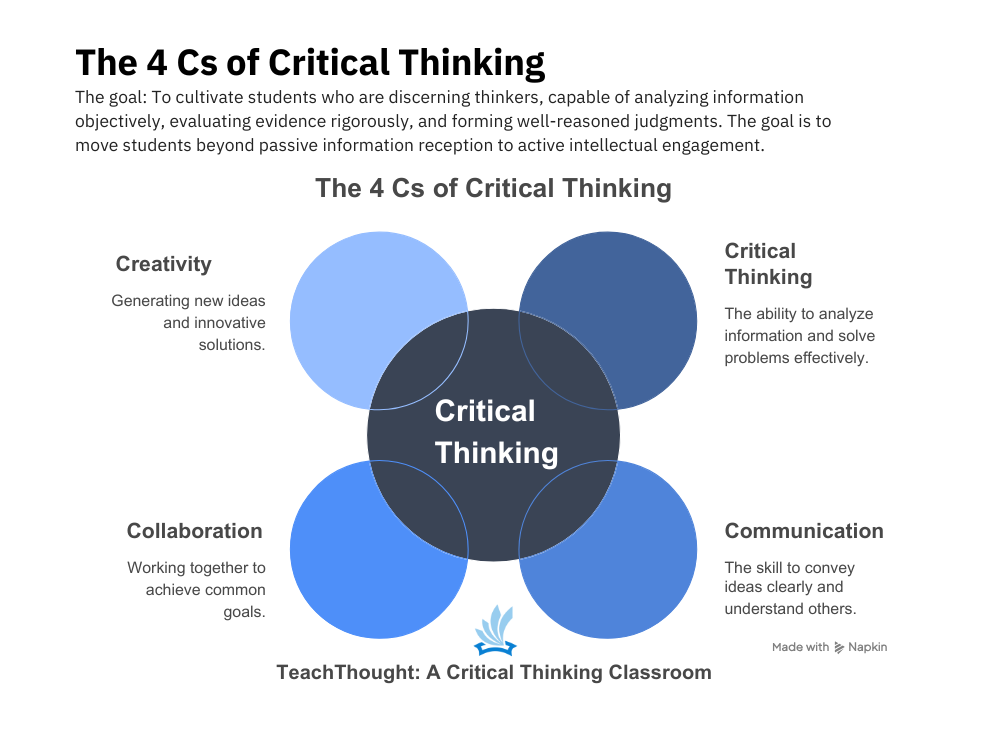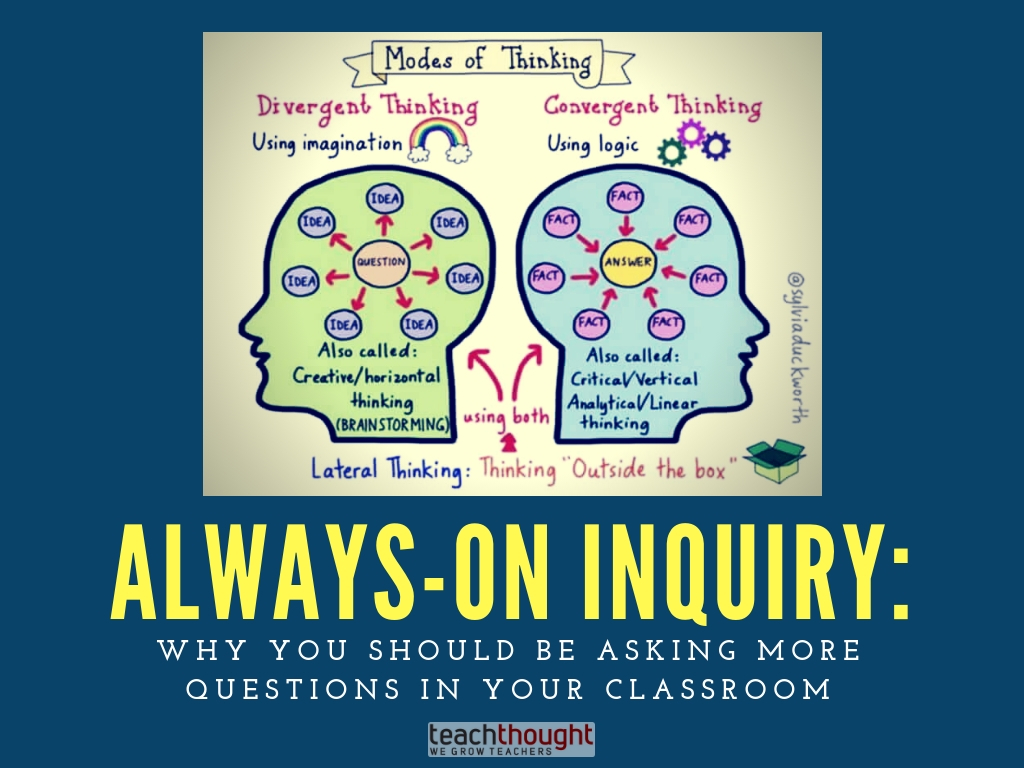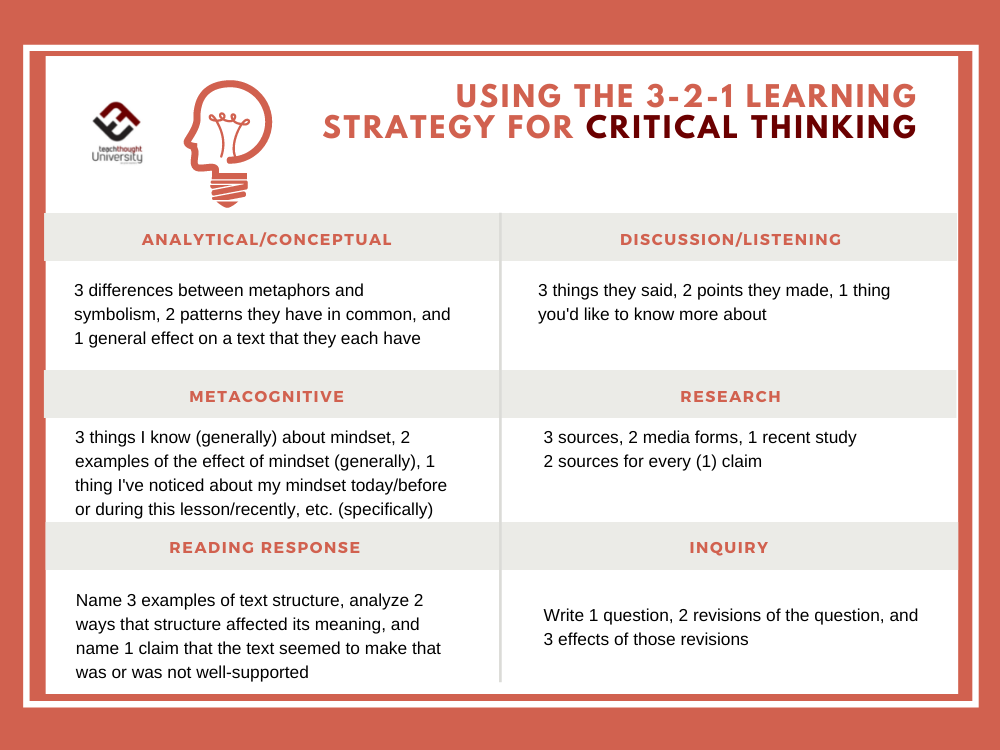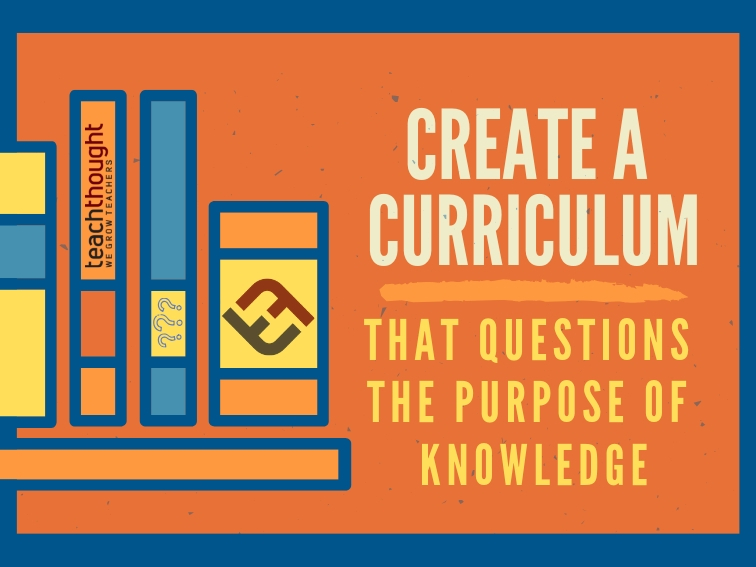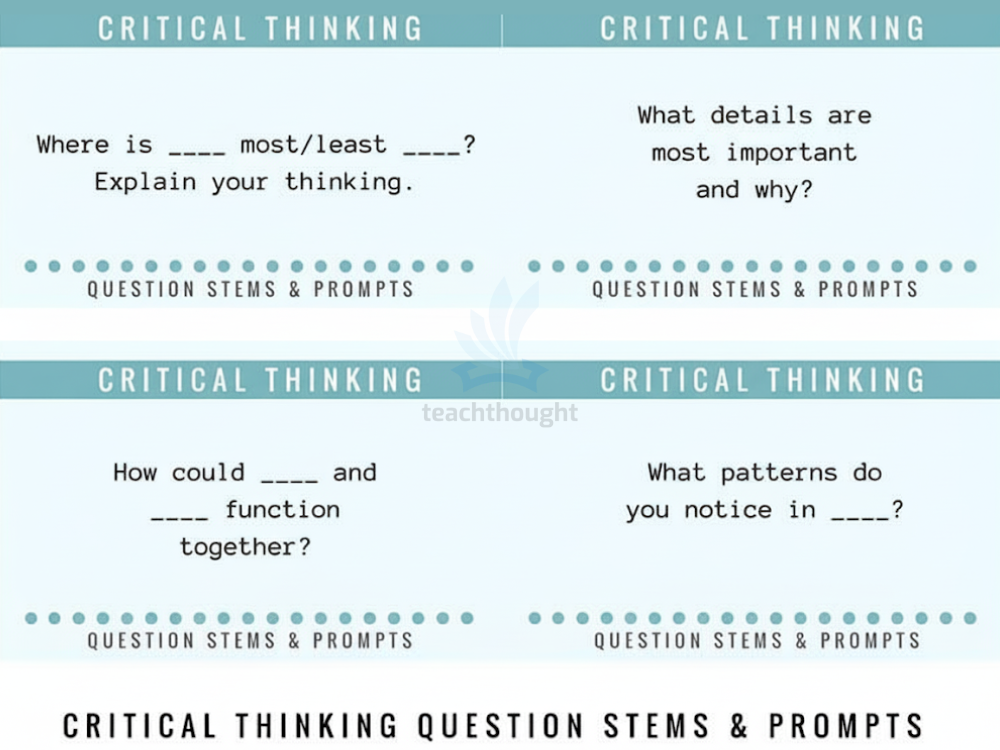Critical Thinking Posts
100+ Bloom’s Taxonomy Verbs For Critical Thinking
A comprehensive list of Bloom’s Taxonomy verbs, organized by cognitive level, to guide lesson planning, assessment design, and the development of critical thinking.
The Foundational 4 Cs of Critical Thinking in K-12…
The 4 Cs of Critical Thinking: Critical Thinking, Communication. Collaboration, and Creativity.
50 Examples Of Analogies For Critical Thinking
By forcing students to distill one relationship in order to understand another, it’s almost impossible to solve analogies without understanding.
What Does ‘Critical Thinking’ Mean?
Critical thinking is the suspension of judgment while identifying biases and underlying assumptions in order to draw accurate conclusions.
Why You Should Be Asking More Questions In Your…
Teaching students to ask good questions engages them & acts as ongoing assessment. Here are some of the benefits of inquiry-based…
Using The 3-2-1 Learning Strategy For Critical Thinking
The 3-2-1 strategy is a simple way to frame a topic or task, making it useful for anything from discussion prompts…
147 Logical Fallacies: A Master List With Examples
Logical fallacies are irrational arguments made through faulty reasoning common enough to be named for its respective logical failure.
20 Types Of Questions For Teaching Critical Thinking
What are some of the most common types of questions for teaching critical thinking? This led to many dozens of answers.
